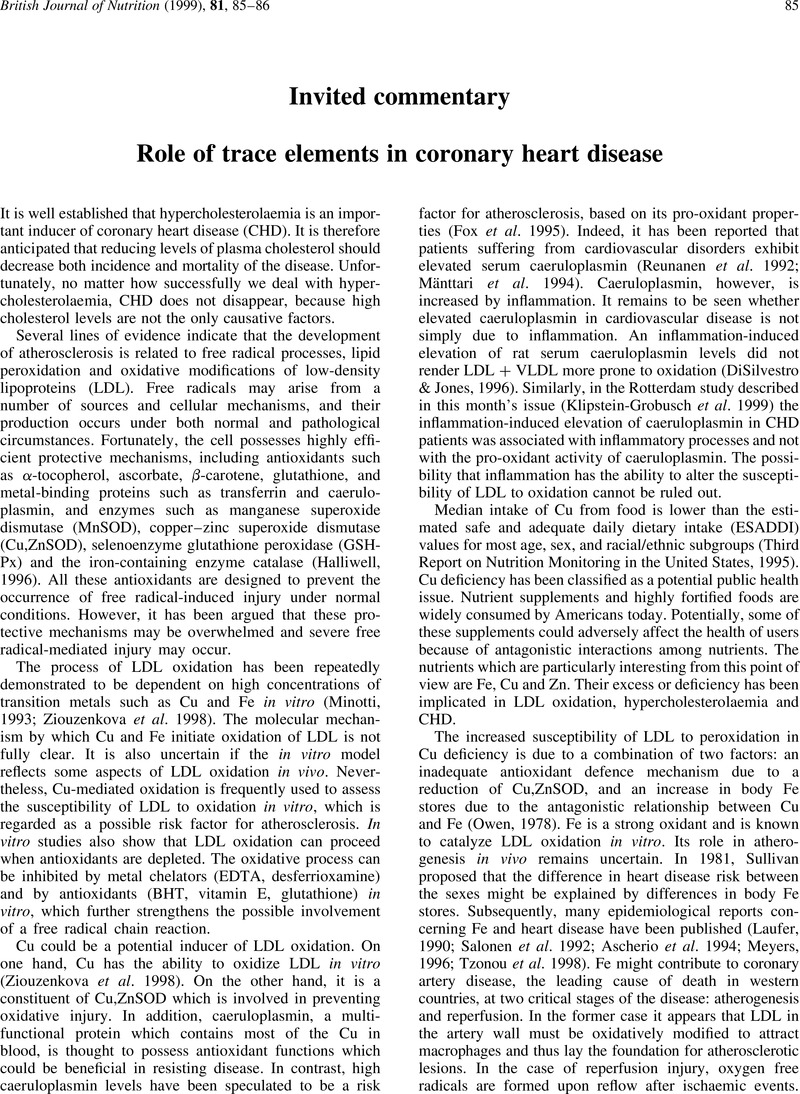Crossref Citations
This article has been cited by the following publications. This list is generated based on data provided by Crossref.
Rayssiguier, Y.
and
Mazur, A.
2002.
Trace Elements in Man and Animals 10.
p.
97.
Ilbäck, Nils-Gunnar
Benyamin, Gad
Lindh, Ulf
Fohlman, Jan
and
Friman, Göran
2003.
Trace Element Changes in the Pancreas During Viral Infection in Mice.
Pancreas,
Vol. 26,
Issue. 2,
p.
190.
Finch, Caleb E
and
Stanford, Craig B
2004.
Meat‐Adaptive Genes and the Evolution of Slower Aging in Humans.
The Quarterly Review of Biology,
Vol. 79,
Issue. 1,
p.
3.
Frisk, Peter
Tallkvist, Jonas
Gadhasson, Inga-Lill
Blomberg, Jonas
Friman, Göran
and
Ilbäck, Nils-Gunnar
2007.
Coxsackievirus B3 Infection Affects Metal-Binding/Transporting Proteins and Trace Elements in the Pancreas in Mice.
Pancreas,
Vol. 35,
Issue. 3,
p.
e37.
Ceylan, Osman Melih
Can Demirdöğen, Birsen
Mumcuoğlu, Tarkan
and
Aykut, Osman
2013.
Evaluation of Essential and Toxic Trace Elements in Pseudoexfoliation Syndrome and Pseudoexfoliation Glaucoma.
Biological Trace Element Research,
Vol. 153,
Issue. 1-3,
p.
28.
Ilyas, Asim
and
Shah, Munir H.
2018.
Chemometric Evaluation of Elemental Imbalances in the Scalp Hair of Valvular Heart Disease Patients in Comparison with Healthy Donors.
Biological Trace Element Research,
Vol. 181,
Issue. 1,
p.
10.
Olivares, Roberto Walter Israel
Postma, Gabriela Cintia
Schapira, Andrea
Iglesias, Dario Ezequiel
Valdez, Laura Beatriz
Breininger, Elizabeth
Gazzaneo, Pablo Daniel
and
Minatel, Leonardo
2019.
Biochemical and Morphological Alterations in Hearts of Copper-Deficient Bovines.
Biological Trace Element Research,
Vol. 189,
Issue. 2,
p.
447.





